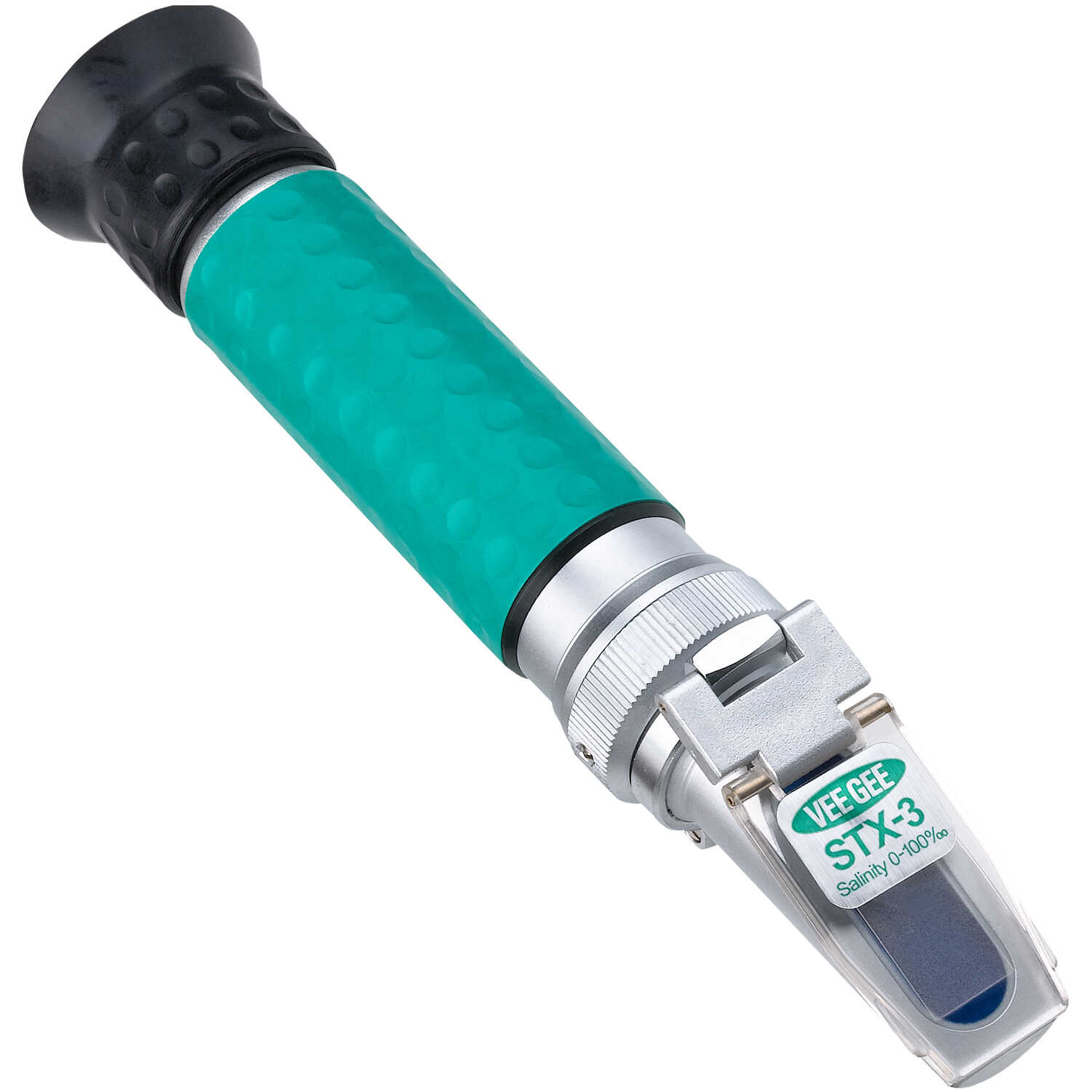
Description
Portable Salinity Refractometer Model STX-3
Based on light refraction in liquid, this compact refractometer accurately display percentages of dissolved salt ppt/specific gravity in liquid. Simply place a few drops of sample liquid on the specially angled lens and peer through the adjustable eyepiece. Results instantly appear along a scale within the eyepiece. No power source required! A rubber-coating eliminates inaccuracies caused by body heat. Calibration tool, full instructions, and protective case included. This dual scale salt refractometer may be used to determine either the parts per thousand of salt dissolved in water or the specific gravity of salt water. It’s the affordable way to accurately monitor salt content in fisheries, nursery irrigation systems, sea water, etc. Temperature compensated from 10°C to 30°C.
Warning: Cancer and Reproductive Harm P65Warnings.ca.gov
Have A Question?
Quick Specs
| Brand | Vee-Gee |
| MPN | 43036 STX-3 |
| UPC | |
| UNSPSC | 41113000 |
| Other |
Range: 0 to 100 ppt; 1.000 to 1.070 specific gravity. Resolution: 1 ppt; 0.001 specific gravity. Accuracy: ±1 ppt; ±0.001 specific gravity. Temperature compensation: 10°C to 30°C. Dimensions: 7-3/4”L x 1-1/2” dia.
|
Quick Specs
Related Products
Shop All Water Quality ManagementHave a question about this product?
Reviews
The changes in the salinity refractometer were not well thought out. Namely how to calibrate the instrument. In order to calibrate a collar must be rotated, which zeros the reading. In order to rotate the collar, a screw must be loosed. The collar is very difficult to turn and often the tiny screw must be entirely removed making it likely to be lost. The old way, with a screw on top of the device that allowed the reading to be zeroed, worked far better. The new rubber coating slips, making it very difficult to get a grip to turn the calibration collar, further complicating the calibration process.

